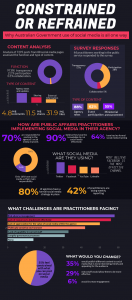Constrained or refrained: Why Australian Government use of social media is all one way
Social media as a professional communications channel is a relatively new phenomenon, really only becoming main stream less that 15 years ago. It is broadly recognised as online platforms that allow for the creation and exchange of user-generated content, but the public sector is often criticised for using it as a one-way channel of communication.
Many of us are familiar with the range of platforms which have been developed to support personal and professional communication, engagement, collaboration and networking. While personally we may be familiar with checking our Twitter feed, updating our Facebook status or linking to colleagues on LinkedIn, for many of us working in communications how to use it to meet organisational objectives, while balancing the inherent risks, is still a mystery.
As a former Communications Manager in the public sector I was interested in how Australian Government agencies were implementing social media, and some of the challenges practitioners were facing. So as part of my Masters in Strategic Communications I undertook a research project to look at this topic. There are now hundreds of official government social media pages, with more than 77 per cent of government agencies having a presence in one or more platforms. However, many have questioned how effective they are in engaging the public and communicating priorities. This was a limited study and I don’t proclaim that the outcomes reflect every government agency, but it was one of the broadest academic studies into Australian Government use of social media that I was able to identify.
This post provides a high-level overview of the outcome of my study which included, content analysis of posts from Twitter, Facebook and LinkedIn, and a survey of public affairs practitioners. Content analysis
In the first part of my study I analysed 7295 posts over a three-month period from Twitter, Facebook and LinkedIn for forty-two randomly selected government agencies. Twitter was the most active platform with 39 official pages, producing 74 per cent of the posts analysed. On average agencies posted more than once a day in Twitter and Facebook, but less than once every three days in LinkedIn.
The analysis showed that overwhelmingly Australian Government agencies are using social media platforms to broadcast one-way communication. In Facebook and Twitter, content primarily focused on agency news and updates, and information from third-parties (either links or reposts). In LinkedIn, not surprisingly, there was a stronger focus on sharing employment opportunities. There was little evidence of agencies posting to social media to encourage participation or collaboration from the public.
Survey results
The second phase of the study, an online survey, sought insights from public affairs practitioners employed by the Australian Public Service. Forty-four practitioners provided information about their current approach to implementing social media in the public sector including strategy development and evaluation, professional experience, training and knowledge, and operational limitations.
A key finding of the survey was that practitioners are intentionally focusing on one-way communication, with a majority having a social media strategy in place. Most are seeking to raise the profile, visibility and awareness of their agency’s work. Practitioners are regularly measuring and evaluating their social media outcomes, using a combination of external services (Hootsuite, iSentia etc) and inbuilt analytics tools (Facebook insights, Twitter analytics etc). They are reporting on the outcomes of social media posts to Business Areas and Executive on a regular basis. When posting content almost all practitioners are then monitoring activities (comments, likes, shares) generated from posts and use these outcomes as a way to evaluate success. Around 69 per cent are using this regular reporting and analytics to improve their social media content, however, interestingly, 30 per cent are not.
Survey respondents believed Facebook was the most successful channel based on the ability to tailor content more effectively in this platform, better engagement from the audience and more followers. However, they are more likely to have an official presence on Twitter.
Overwhelmingly, practitioners believe they have the knowledge to make their agencies’ channels a success, but their approach may be influenced by a lack of technical competency. The survey identified that only half respondents had professional experience in using social media before this current role. Experience increased at lower staffing levels, with 69 per cent of APS staff having experience compared to only 35 per cent EL1/2 staff. This could be an indication that social media is becoming a skill that is being sought out when recruiting junior staff. Practitioners are even less likely to have had any formal training, with less than 35 per cent having any formal qualifications or training in social media. APS staff are even less likely, with only 11 per cent having any training.
In establishing and managing official channels of communication in social media platforms practitioners are facing a range of challenges. These challenges include risk adverse management, resource constraints and a lack of appreciation for the value of social media. This environment is leading more than half of respondents to feel constrained in what they are able to post in official government channels. Medium sized and regulatory agencies are more likely to feel constrained in what they can post, smaller agencies are less likely to feel constrained. If practitioners faced no challenges or constraints they would publish more interesting, timely and appealing content. Very few would increase engagement with the public, perhaps demonstrating that practitioners are realistic about what they can do in the current environment.
Conclusions
The study found that while there is a lack of capability within public affairs practitioners, the environment is a key factor in the way social media is being implemented in government. The 2009 Australian Government 2.0 Taskforce Report noted that a significant culture change would be needed for practitioners to be able to implement a more collaborative approach in line with the expectations of Government 2.0, this is clearly yet to occur. I think most communications practitioners in Government would admit that the chances of a significant culture change in the public service, that would allow for a more collaborative, user-centric approach, is unlikely in the immediate term.
My study concluded that practitioners are operating in a complex professional environment unique to the public sector. I believe that this research has shown that the public sector needs to establish its own parameters for success in social media practice, it needs to stop measuring itself against other sectors. One of my favourite comments from the survey summed this up so well:
“Social media in government is quite complex and there are several nuances that do not allow us to use it in the same way non-government organisations use social media. I believe that government still has a long way to go to determine what is best practice in our unique communications environments, what are the procedures we need to put in place to achieve this and how to best resource it” – EL1/2, medium, operational agency.
Public affairs professionals should be aiming to use social media to achieve realistic goals based on their organisational objectives based on the risk appetite of their agency. There is no shame in using social media to ensure that your audience is informed and educated about your work. Maybe we need to be a little kinder to ourselves, we know what type of environment we work in, so our expectations about what we can achieve with social media need to take this into account.
Social media will be most effective for government agencies when we actively manage our channels, integrate content with other communication activities, and importantly break away from public sector speak, and produce interesting and creative content.
If anyone is interested in getting more details about the findings from my research, wants to chat about social media in government or would like to know if their agency was part of my sample please contact me!
PS – You can also watch the Presentation of my dissertation if you are really interested!



One Comment
Crystal
Thanks for sharing your findings Mel. We definitely need to find a way forward to be able to speak to and ENGAGE WITH the public.